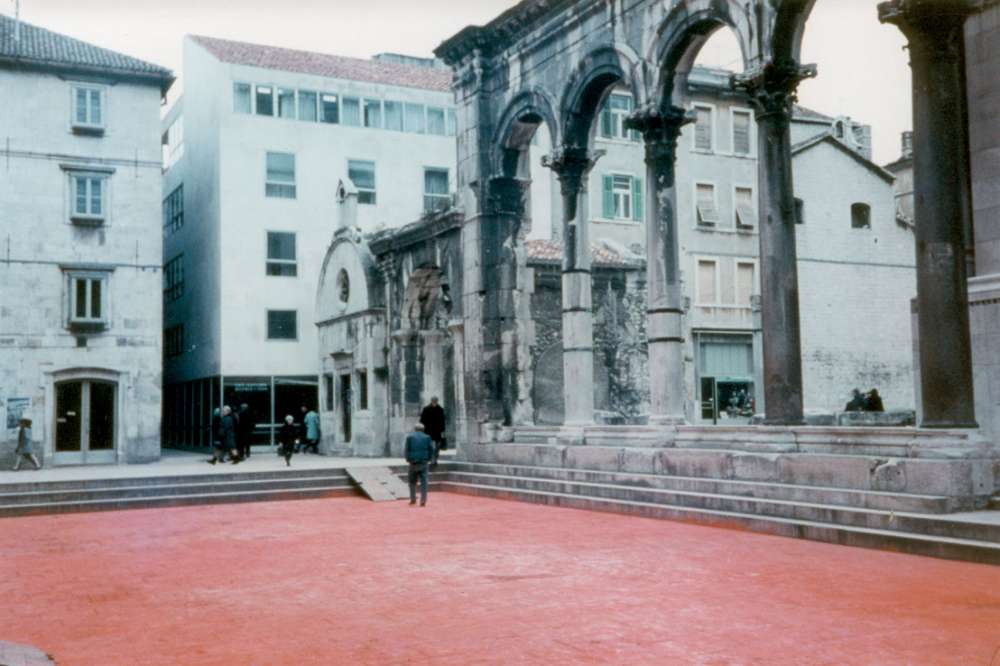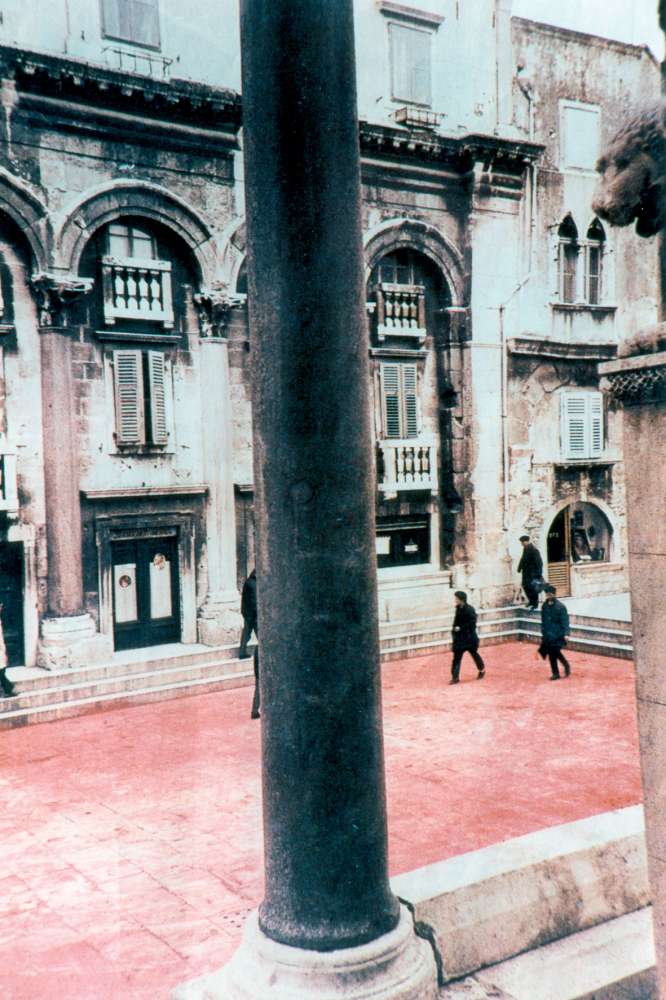One of the most memorable urban interventions in Croatia took place in Split in 1968.
On the morning of January 12th 1968, the citizens of Split woke up to find the Peristyle painted bright red. The initial shock turned into guessing games, followed by a rumour about the site being used as a filming location. It didn’t take long for the police to find the real culprits: eight college students assembled in an art group conveniently named the Red Peristyle.
The group was led by fine arts students Slaven Sumić, Pavle Dulčić and Radovan Kogej, who were planning the action for two months in an empty attic of a nearby building. Prior to painting the Peristyle, the members of the group signed an official statement about their endeavour, then proceeded to gather on the Peristyle on January 11th at 11 PM. It took 30kg of red paint to cover the entire site.
Half an hour later, a patrolling officer came across the freshly painted lot and reported the incident. The first culprit was found immediately in the morning, followed by the rest of the students getting arrested for damaging a monument of historical and cultural importance. They were forced to turn the Peristyle back into its original state and later released.

Local newspaper Slobodna Dalmacija reported their intention was to alter the state of the Peristyle due to “its colour being monotonous and boring both for passengers and the artists”, but that might have been an oversimplification of the event that is known as the first urban intervention in these parts. The performance was deemed an act of vandalism by the public and the media, but soon thereafter alternative interpretations started to take form, calling the Red Peristyle a revolutionary action that was devised to express dissatisfaction with the current state of affairs.
1968 was a turbulent year; seeing that social movements and art are intertwined as a rule, the period has seen numerous artistic actions and performances supporting the student protests all over Europe. Art historians are opposing the notion of vandalism, considering such events to be a manifestation of civic awareness and a reaction to the political situation at the time. It was never established whether the Red Peristyle was an artistic or a political act. Whatever the case, it remains one of the most memorable moments in the city’s recent history.

Image source: Avantgarde Museum









